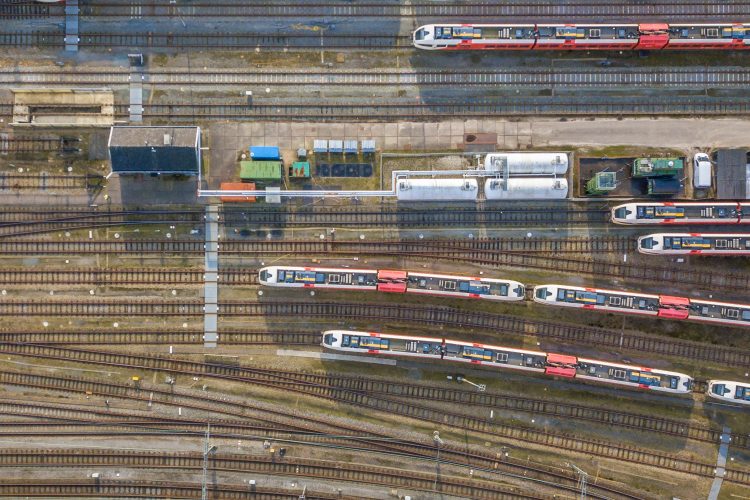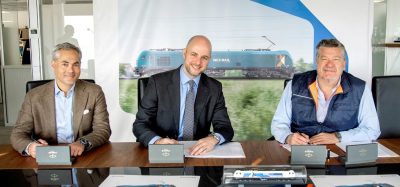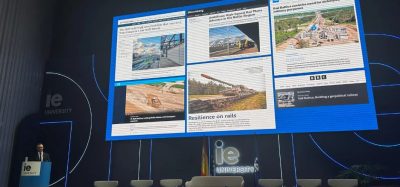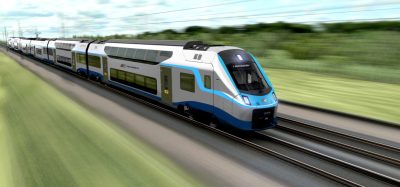Modernising Rail: The Digital Advantage in ERTMS Projects
Posted: 14 November 2025 | Breda Kiely | No comments yet
As Europe advances rail modernisation, ERTMS projects remain challenging to deliver across diverse legacy systems and national requirements. The challenge now is achieving implementation that is both consistent and efficient, a goal that is becoming more attainable through emerging digital delivery methods.


The European Rail Traffic Management System (ERTMS) is a transformative initiative designed to standardise train control and signalling across Europe, enhancing safety, capacity and interoperability. However, implementation remains highly challenging as each country operates with distinct legacy systems, technical specifications and regulatory frameworks. This fragmentation introduces significant integration and compliance hurdles, particularly in cross-border corridors. At the core is the technical difficulty of integrating ERTMS with diverse legacy signalling and control systems, many of which were never designed for interoperability.
Technology is just one piece of the puzzle
Together, these technologies form the backbone of a digitally enabled delivery model that improves efficiency, reduces risk, and enhances the overall quality of ERTMS deployments.”
These challenges extend beyond technology alone and are often accompanied by high capital expenditure and extended deployment timelines, particularly in brownfield environments. Successful implementation requires coordinated planning and execution across multiple stakeholders, including infrastructure managers, operators, suppliers and national authorities.
Ensuring safety, maintaining compliance with evolving standards, and preserving operational continuity during transition phases further compound the complexity. Addressing these challenges demands not only robust engineering, but also strategic programme governance and digitally enabled delivery models.
Join our free webinar: Rail cyber-security in a time of technological and regulatory transformation
Join our expert panel, including speakers from Nokia and Siemens Mobility, to explore the critical convergence of cybersecurity and 5G rail comms.
Date: 3 Dec | Time: 15:00 GMT
Can’t attend live? No worries – register to receive the recording post-event.
The digital advantage in ERTMS projects
Traditional delivery models are increasingly inadequate in managing this complexity. Digitalisation, through the application of model-based design, connected data environments and digital twins, provides a scalable and systematic approach to address these challenges. These technologies enable more effective system integration, real-time validation, and lifecycle traceability, supporting consistent and efficient ERTMS deployment across diverse national context.
Integrated 3D modelling allows for model-based design of signalling and infrastructure assets, enabling early-stage clash detection and design validation that significantly reduce rework during construction.
Common data environments provide a centralised platform for data sharing, version control and real-time collaboration across multidiscipline teams and suppliers, ensuring consistency and transparency throughout the project lifecycle.
Construction simulation tools using 4D and 5D modelling enable precise planning of construction sequencing and cost control, while minimising disruption to live rail operations.
Additionally, digital twins further enhance system understanding by simulating signalling behaviour and asset interactions, supporting predictive maintenance strategies and informed lifecycle management. Together, these technologies form the backbone of a digitally enabled delivery model that improves efficiency, reduces risk, and enhances the overall quality of ERTMS deployments.
Real-world impact: Banedanmark Denmark signalling upgrade
A compelling example of these digital enablers in action is Banedanmark’s nationwide signalling programme in Denmark. Faced with the challenge of replacing over 50 legacy signalling systems across 2,600 kilometres of track, Banedanmark adopted a fully digital delivery model to manage complexity and risk.
By leveraging integrated 3D modelling and a connected data environment, the project team was able to coordinate design, detect clashes early, and maintain a single source of truth across disciplines. Digital twins were used to simulate signalling logic and asset interactions, enabling early validation and reducing the need for costly on-site testing. Additionally, 4D construction simulation supported precise planning and minimised disruption to live operations. This approach not only improved delivery efficiency and stakeholder coordination, but also set a new benchmark for how large-scale ERTMS programmes can be executed using digital technology.
The future is digital, open and connected
Technology partners play a critical role in enabling the successful digital delivery of ERTMS projects. Bentley Systems has over 25 years of experience supporting rail organisations across the world.
Our integrated rail solutions facilitate model-based design, asset performance management, and construction simulation within a connected data environment, ensuring that complex signalling and infrastructure systems are delivered with precision and transparency. It’s not just about software, as Bentley is committed to open standards and interoperability, which allows seamless integration with other platforms and stakeholders’ systems. This openness is essential in multivendor, multijurisdictional environments like ERTMS, where collaboration and data consistency across the supply chain are key to reducing risk, improving efficiency and ensuring long-term system resilience.
With the European Union continuing to prioritise rail modernisation through funding instruments like the Connecting Europe Facility (CEF) and the Recovery and Resilience Facility (RRF), there has never been a better time to invest in digital strategies. These funding opportunities can significantly offset the cost of transformation while aligning with broader EU goals for sustainability and interoperability.
Explore how Bentley’s digital solutions can support your ERTMS journey and discover what’s possible.
About the Author


Based in Dublin Ireland, Breda holds a bachelor’s degree in economics and finance from the University of Limerick and a master’s degree in digital marketing from the University College Dublin.
OUT NOW: The Definitive Guide to Rail’s Digital Future
The rail industry is undergoing a digital revolution, and you need to be ready. We have released our latest market report, “Track Insight: Digitalisation.”
This is not just another report; it’s your comprehensive guide to understanding and leveraging the profound technological shifts reshaping our industry. We move beyond the buzzwords to show you the tangible realities of AI, IoT, and advanced data analytics in rail.
Discover how to:
- Optimise operations and maintenance with real-time insights.
- Enhance passenger services through seamless, high-speed connectivity.
- Leverage technologies like LEO satellites to improve safety and efficiency.
Featuring expert analysis from leaders at Nomad Digital, Lucchini RS, Bentley Systems and more, this is a must-read for any rail professional.
Related topics
Building Information Modelling (BIM), Cyber-Security, Digital Twins, Digitalisation, European Rail Traffic Management System (ERTMS), European Train Control System (ETCS), Infrastructure Developments, Internet of Things (IoT), Interoperability & Liberalisation, Operational Performance, Signalling, Control & Communications, Standardisation & Technical Harmonisation, Technology & Software








